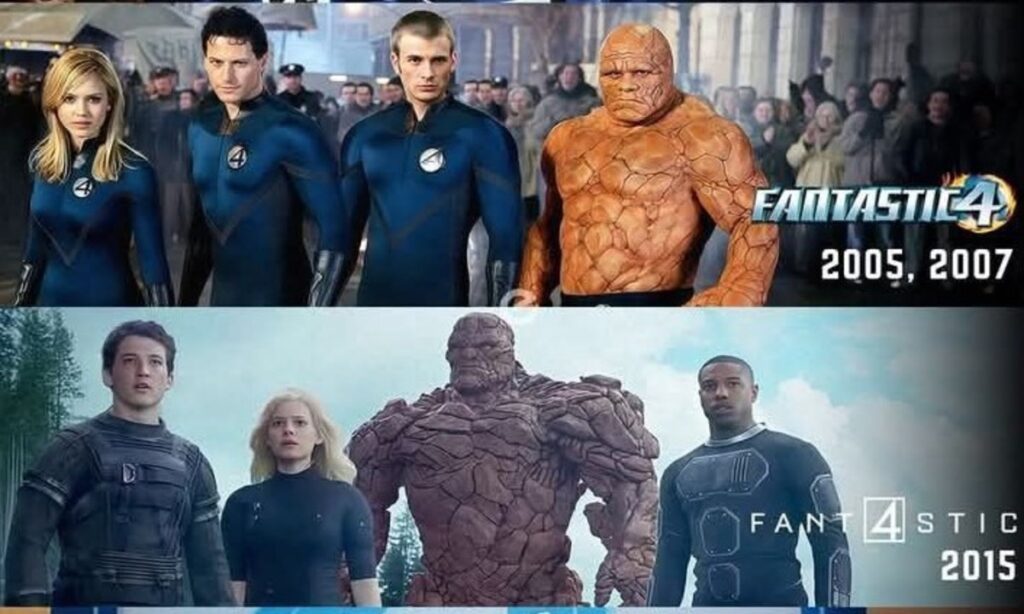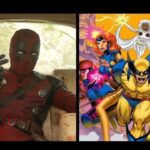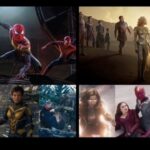Creating a great Fantastic Four movie involves considering several key factors that can transform the characters and their world into an engaging, enjoyable experience for both fans and newcomers. Looking at past attempts, there are a few crucial lessons that can be learned to improve future adaptations. Here’s a detailed breakdown:
1. Staying True to the Core Characters and Team Dynamic
The Fantastic Four is first and foremost a family. Their strength lies in their bond and teamwork, with each member playing a vital role:
- Reed Richards (Mr. Fantastic) is the brilliant, albeit flawed, scientist and leader.
- Sue Storm (Invisible Woman) is the empathetic and powerful backbone of the group.
- Johnny Storm (Human Torch) brings humor, flair, and energy to the dynamic.
- Ben Grimm (The Thing) embodies the heart and humanity of the group, despite his monstrous appearance.
Lesson from the Past:
Earlier movies, especially the 2005 Fantastic Four and Fantastic Four: Rise of the Silver Surfer (2007), focused on the spectacle, sometimes neglecting the true character development and family bonds. The movies leaned heavily on humor and light-hearted moments but didn’t dive deeply into the emotional and psychological struggles each character faced.
A strong Fantastic Four movie needs to focus on their personal relationships, their growth as individuals, and the tension they sometimes feel as a family. The chemistry between the cast is crucial, and their interactions should feel genuine and emotionally charged.
2. Exploring the Science-Fiction Elements
At its heart, Fantastic Four is a science-fiction franchise, and that element should be showcased in a meaningful way. The origin of the team—gaining powers due to exposure to cosmic rays—should be more than just an event that sets the stage for action. The science behind their abilities is important because it ties into the heart of the story.
Lesson from the Past:
In past movies, the science-fiction aspect often took a backseat, with the plot relying more on spectacle and action sequences rather than intellectual or scientific exploration. The 2015 Fantastic Four reboot tried to give a more grounded, darker take but struggled with a confusing narrative and did not delve deeply enough into the scientific aspects of the characters’ powers.
A good Fantastic Four movie should balance the scientific origins of the characters with their human side. It should include scenes that explore Reed’s intellect and Sue’s leadership, while still being accessible and entertaining.
3. Handling Villains Effectively
A Fantastic Four movie needs a strong and compelling antagonist to provide the team with the right level of challenge. In the past, we’ve seen villains like Dr. Doom and Galactus, but these villains often were poorly executed. For instance, Dr. Doom in the 2005 movie was a missed opportunity—he was portrayed as a corporate villain with a lack of depth, while Galactus in Rise of the Silver Surfer was a giant cloud rather than the iconic cosmic threat.
Lesson from the Past:
Villains need to have strong motivations and clear backstories. Dr. Doom, for example, is a brilliant but tragic character whose desires and obsessions should be explored in-depth. He shouldn’t just be a power-hungry villain, but a complex figure with layers that make him both a threat and a tragic figure. Similarly, Galactus needs to be portrayed as a genuine cosmic force, not just an ominous presence.
A great Fantastic Four movie should give the villain the same level of attention as the team members, providing them with a well-rounded backstory and motivations that enhance the narrative.
4. Balancing Action and Heartfelt Moments
While Fantastic Four should have exciting action sequences, what truly makes the story stand out are the quiet, emotional moments. The team’s struggles, not only with their powers but with the sacrifices they make for one another, are what make them relatable and endearing.
Lesson from the Past:
The 2015 reboot of Fantastic Four was criticized for focusing too much on a dark tone and not balancing the action with moments of levity and heart. The characters were seen as more isolated than in earlier versions, which detracted from the team dynamics.
A good Fantastic Four movie must strike a balance between intense action and deeper moments where the characters confront their fears, doubts, and desires. Their sacrifices should feel meaningful, and their victories should be earned emotionally as well as physically.
5. Visual Effects and Powers
The Fantastic Four’s powers are visually impressive and can offer some of the most exciting sequences in a superhero film. The stretching powers of Mr. Fantastic, the invisible force fields of Sue Storm, the fiery bursts of Johnny Storm, and the brute strength of Ben Grimm can all be brought to life in innovative ways.
Lesson from the Past:
In earlier adaptations, the special effects sometimes felt dated or didn’t quite match the scale of the characters’ powers. The 2015 reboot had impressive visuals for the time but failed to make the characters’ powers feel as integral to the story.
A good Fantastic Four movie should use state-of-the-art special effects to make the team’s abilities feel fresh and essential to the action. The visual effects should not just be flashy—they should enhance the narrative and highlight the team’s unique dynamics and challenges.
6. Expanding the Universe
Fantastic Four is part of a larger Marvel Universe that has been carefully constructed over the years. The team has strong ties to other characters, such as the X-Men, Avengers, and cosmic entities. Incorporating these connections (while staying true to the Fantastic Four’s core) can create a rich, interconnected world.
Lesson from the Past:
Previous movies didn’t fully explore the potential of the Fantastic Four‘s connection to the greater Marvel Universe. The 2015 reboot missed out on tying the group to the larger MCU, which is now a critical element of success for any superhero franchise.
A great Fantastic Four movie should lay the groundwork for future connections, whether through hints at larger cosmic events, references to the X-Men or Avengers, or even introducing other beloved characters from their comic book mythology. This helps build a shared universe that can keep audiences invested.
7. Pacing and Tone
The pacing of a Fantastic Four movie needs to be just right. The film should take the time to develop its characters and their relationships while still delivering engaging action. The tone should balance light-hearted fun with moments of depth. After all, Fantastic Four is a family story at its core, and their lighthearted moments should coexist with the weight of the challenges they face.
Lesson from the Past:
The pacing of the 2005 and 2007 films was often inconsistent, with the story feeling rushed at times and dragging at others. The tone, too, fluctuated between campy and serious, leading to a lack of cohesion.
A good Fantastic Four movie should keep a steady pace, focusing on character development in the first act, ramping up the stakes in the second, and delivering a satisfying conclusion without losing sight of the emotional core.
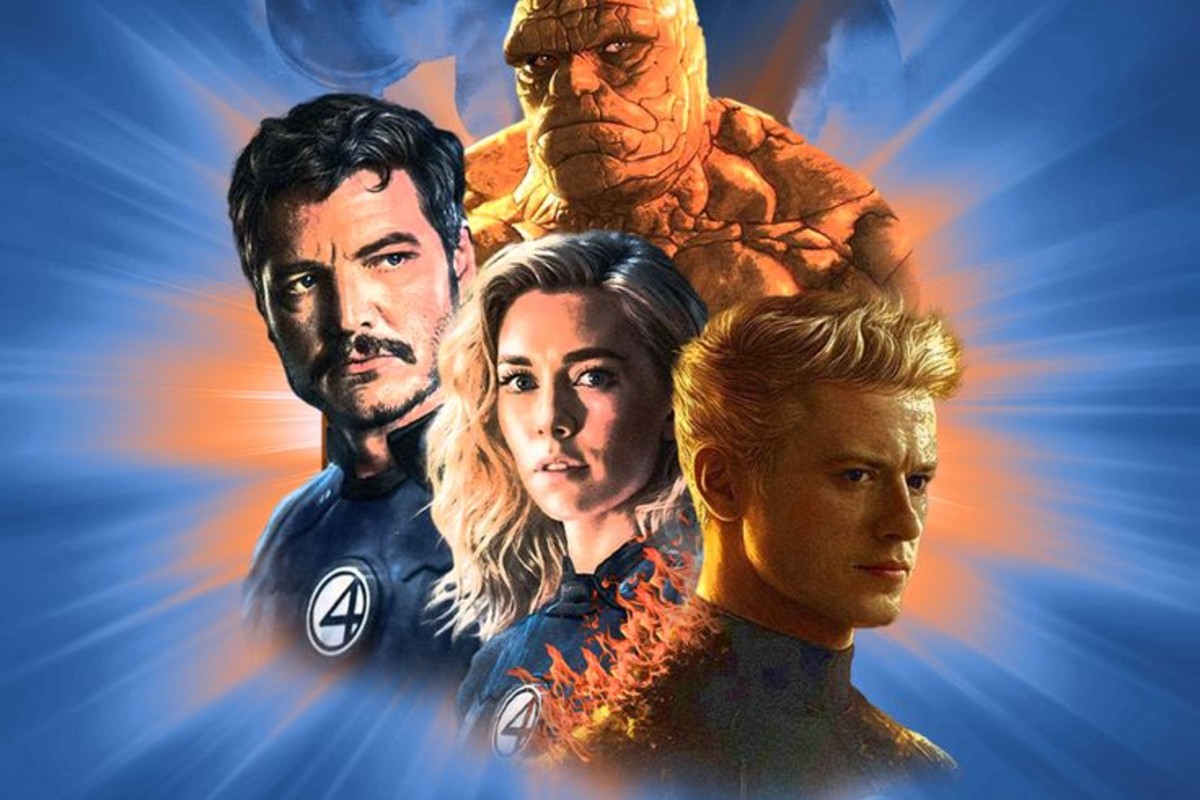 Every Fantastic Four Movie Ranked & Compared
Every Fantastic Four Movie Ranked & Compared
Conclusion: The Ideal Fantastic Four Movie
A great Fantastic Four movie needs to balance heart, spectacle, and smart storytelling. It should delve into the science-fiction elements, build on the complex relationships within the team, and make sure the characters are both powerful and relatable. Learning from the past, the movie should not just rely on flashy visuals but also on solid character arcs, strong villains, and emotional payoff. With these elements, a Fantastic Four movie can truly succeed and stand as a memorable entry in the superhero genre.
A breakdown of what worked and failed in earlier films.
A breakdown of what worked and failed in earlier Fantastic Four films reveals several insights into the challenges of adapting this iconic team to the big screen. Let’s take a closer look at the three main attempts at a Fantastic Four movie: the 2005 Fantastic Four and Fantastic Four: Rise of the Silver Surfer, and the 2015 reboot.
1. Fantastic Four (2005)
What Worked:
- Character Chemistry and Casting:
- The casting of Chris Evans as Johnny Storm and Michael Chiklis as Ben Grimm was widely praised. Evans’ charm and humor as the Human Torch made him the standout character, and Chiklis brought heart and vulnerability to The Thing.
- The core team of Jessica Alba (Sue Storm) and Ioan Gruffudd (Reed Richards) was acceptable, though the characters lacked the depth many hoped for.
- Lighthearted, Fun Tone:
- The movie had a light, fun tone, which made it more accessible to a general audience. It embraced the comic book silliness and humor of the source material, avoiding overly dark or gritty storytelling.
- Origin Story:
- The origin story was relatively faithful, showing how the team acquired their powers after being exposed to cosmic rays. The basic premise and character motivations were intact, which gave the movie a good foundation.
What Failed:
- Underdeveloped Characters:
- Despite decent performances, the characters were not given enough depth to be truly compelling. The movie often felt like it relied too heavily on spectacle and humor rather than emotional or intellectual development.
- Reed Richards and Sue Storm were especially underdeveloped, and their relationship, which should be one of the central dynamics, felt rushed and shallow.
- Villain (Dr. Doom):
- Dr. Doom, played by Julian McMahon, was a major letdown. Instead of being the complex, tragic villain fans expected, he was portrayed as a generic, power-hungry antagonist. The decision to give him an origin tied to the corporate world felt disconnected from the iconic comic book version, where Doom is a brilliant scientist and ruler of Latveria.
- Action and Special Effects:
- The visual effects were not as polished as they could have been, especially considering that the team’s powers, such as Mr. Fantastic’s stretching and Sue’s invisibility, rely heavily on CGI. The action felt clunky and uninspired.
- The Thing’s CGI model, while better than past depictions, still felt artificial and lacked the emotional depth necessary to make the audience sympathize with Ben Grimm’s plight.
2. Fantastic Four: Rise of the Silver Surfer (2007)
What Worked:
- Character Dynamics:
- The chemistry between the cast remained strong, especially the relationship between Johnny Storm and Ben Grimm. Their humorous banter helped keep the tone light and enjoyable.
- The exploration of Sue Storm and Reed Richards’ relationship was more developed, particularly when Reed proposes to Sue, adding an emotional layer to the film.
- The Silver Surfer:
- The character of Silver Surfer (played by Laurence Fishburne through voice work) was one of the film’s highlights. The Surfer’s tragic backstory and conflict added depth to the movie, and the visual effects used to bring him to life were impressive.
- The conflict surrounding Galactus, although not fully realized as the iconic cosmic villain, was intriguing. The Silver Surfer’s internal struggle made him a compelling character.
- Improved Visual Effects:
- The special effects were a step up from the first film, especially in the portrayal of the Silver Surfer and the cosmic scale of the events. The scenes involving the Silver Surfer surfing through space and interacting with Earth were visually striking.
What Failed:
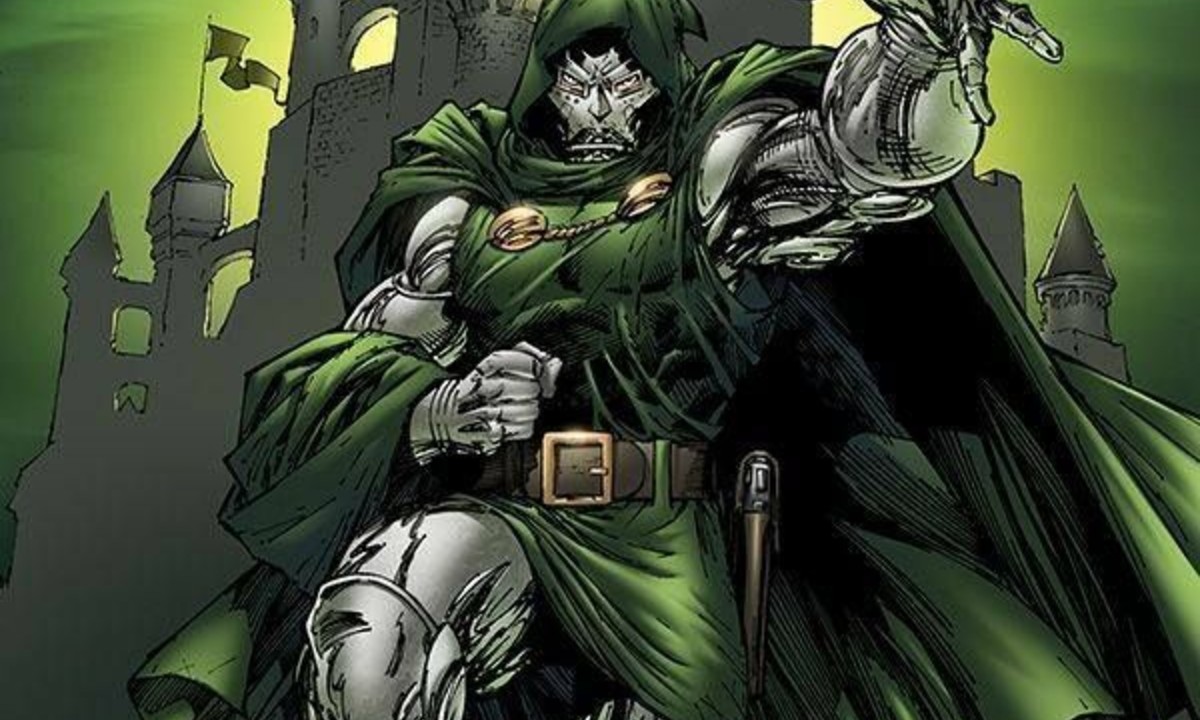 The Genius and Sorcery of Doctor Doom: A Marvel Supervillain Like No Other
The Genius and Sorcery of Doctor Doom: A Marvel Supervillain Like No Other
- Dr. Doom’s Return:
- Bringing back Dr. Doom was a poor decision. He was even less effective as a villain in this sequel, with the writers failing to address his character arc meaningfully. His powers and motivations were unclear, and he felt like a recycled villain without any real depth or change.
- Overcrowded Plot:
- The film attempted to juggle too many plot points at once. The introduction of the Silver Surfer, the Galactus storyline, and the personal drama between Reed and Sue felt overwhelming and diluted the overall impact.
- The film’s pace was rushed, and it felt like there wasn’t enough time to fully explore the significance of the Silver Surfer and Galactus. As a result, the stakes didn’t feel as high as they could have been.
- Missed Opportunity with Galactus:
- One of the biggest disappointments was the portrayal of Galactus as a giant cosmic cloud rather than the iconic, imposing figure from the comics. This choice was met with major backlash from fans, as it undermined Galactus’s stature as one of the most feared villains in the Marvel Universe.
- The decision to sideline Galactus in favor of focusing on the Silver Surfer meant that the cosmic scale and grandeur of the threat were lost.
3. Fantastic Four (2015) – Reboot
What Worked:
- Darker, Grittier Tone:
- The 2015 reboot attempted to present a more serious, grounded tone compared to its predecessors, focusing on the emotional struggles and moral dilemmas faced by the team members.
- The movie was more focused on the consequences of their transformation, highlighting the alienation and trauma that came with their new powers. This darker approach could have been more engaging if the story had been executed properly.
- The Concept of a Science Fiction Drama:
- The reboot tried to explore the sci-fi roots of the team more seriously. The portrayal of the team as brilliant young scientists felt like a more authentic approach to their origins.
- The potential for a fresh take on the Fantastic Four as misunderstood outcasts, grappling with their powers and place in the world, had promise.
What Failed:
- Lack of Character Development:
- The characters, especially Reed Richards (played by Miles Teller) and Sue Storm (played by Kate Mara), were underdeveloped. Their relationships felt shallow, and their emotional arcs were not explored in depth. The film also struggled to establish the unique personalities of each team member.
- The emotional core of the team, which is supposed to be central to the story, was almost non-existent. The film didn’t take the time to show the bond between the characters.
- Dr. Doom:
- Dr. Doom (played by Toby Kebbell) was another major failure. Instead of being a classic, larger-than-life villain, he was transformed into a disaffected, vengeful hacker with powers that didn’t resonate with the comic book portrayal of the character.
- The film’s depiction of Doom as a cybernetic entity with a lack of motivation made him unconvincing and forgettable. He felt more like an afterthought than a significant threat.
- Choppy Pacing and Incoherent Plot:
- The movie’s pacing was erratic, with the first half focusing on the team’s origin story and the second half rushing into the conflict with Doom. This left the final act feeling rushed and underwhelming.
- The plot was fragmented, and there was a distinct lack of coherent storytelling. The film struggled to tie together its darker tone with the traditionally lighthearted nature of the team, resulting in a jarring and inconsistent experience.
- Visual Effects:
- The CGI, especially for The Thing (played by Jamie Bell), was disappointing. While it had potential, it lacked the emotional weight necessary to make the character feel truly human.
- The film also didn’t fully explore or take advantage of the Fantastic Four’s unique powers in exciting ways.
Summary of Key Strengths and Weaknesses Across the Films:
Strengths:
- Fantastic Four (2005): Strong character chemistry, light-hearted tone, and decent origin story.
- Fantastic Four: Rise of the Silver Surfer (2007): Stronger visuals, Silver Surfer as an intriguing character, and better character relationships.
- Fantastic Four (2015): Ambitious, darker, and more grounded tone, exploring the sci-fi side more seriously.
Weaknesses:
- Fantastic Four (2005): Weak villain (Dr. Doom), underdeveloped characters, and inconsistent action.
- Fantastic Four: Rise of the Silver Surfer (2007): Overcrowded plot, weak return of Dr. Doom, and a disappointing portrayal of Galactus.
- Fantastic Four (2015): Lack of character development, incoherent plot, weak Dr. Doom, and rushed pacing.
Each film struggled with finding the right balance between character development, plot, and visual effects, highlighting the difficulty of adapting the Fantastic Four for the screen in a way that resonates with both the heart of the comics and modern filmmaking expectations.
